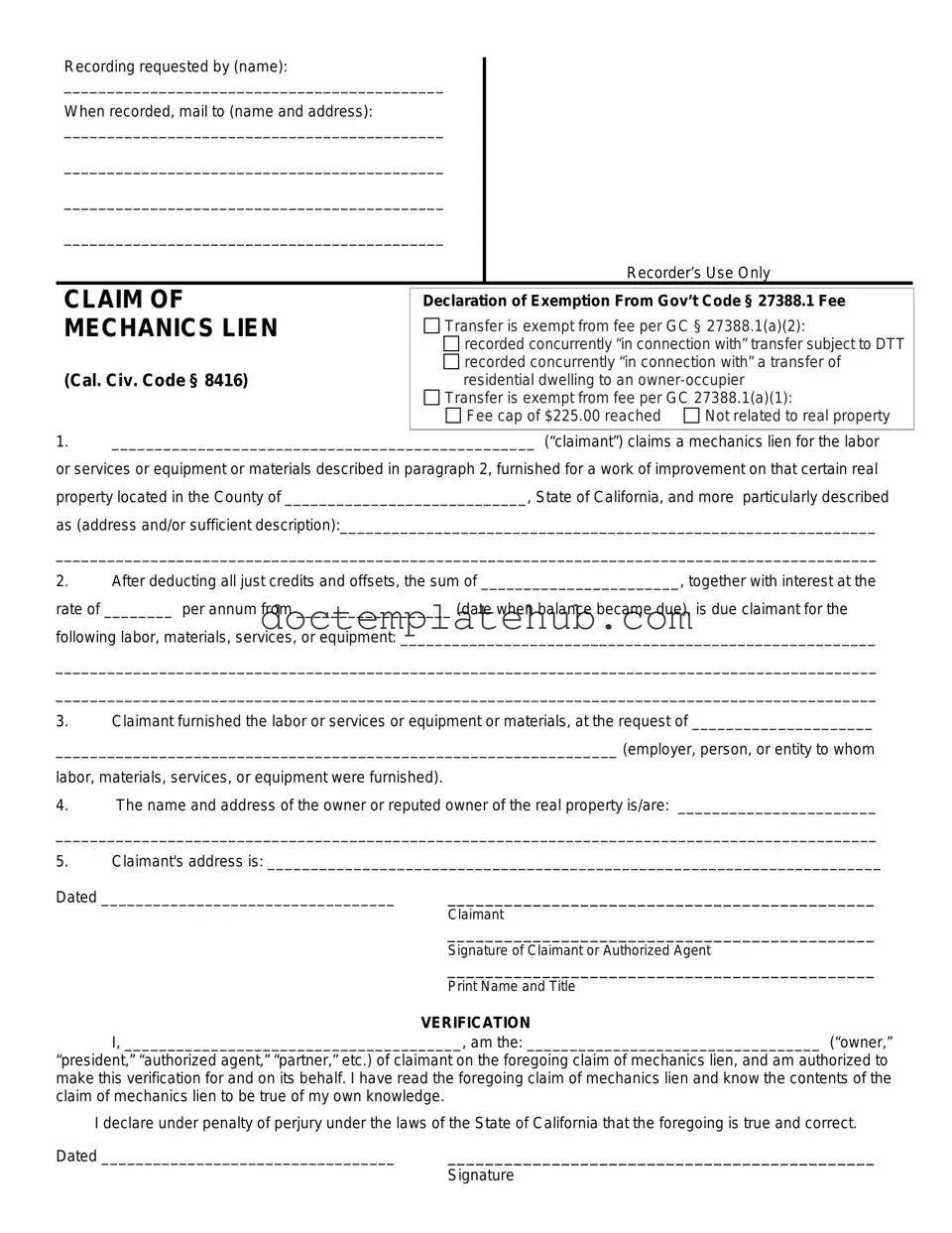What is a Mechanics Lien in California?
A Mechanics Lien is a legal claim against a property that allows contractors, subcontractors, suppliers, and laborers to secure payment for work performed or materials provided. In California, it is a powerful tool to ensure that those who contribute to the improvement of a property can receive compensation, even if the property owner fails to pay. Filing a Mechanics Lien gives the claimant a legal right to seek payment through the property itself.
Who can file a Mechanics Lien in California?
In California, various parties can file a Mechanics Lien, including general contractors, subcontractors, laborers, and suppliers. Essentially, anyone who has provided labor, materials, or services for the construction or improvement of a property may be eligible. However, it’s crucial that the work performed or materials supplied were part of a contract, whether written or oral.
What is the deadline for filing a Mechanics Lien?
The deadline for filing a Mechanics Lien in California is typically 90 days from the completion of the work or the last date materials were supplied. For projects that are not completed, the lien must be filed within 90 days of the date of the last work or materials provided. It’s important to adhere to this timeline to preserve your right to payment.
How do I file a Mechanics Lien in California?
To file a Mechanics Lien, you must complete a specific form that includes details such as the property owner’s name, a description of the work performed, and the amount owed. Once the form is filled out, it must be filed with the county recorder’s office where the property is located. Additionally, you must serve a copy of the lien on the property owner and, in some cases, the general contractor. Ensure that all steps are followed to avoid any complications.
What happens after I file a Mechanics Lien?
Once the Mechanics Lien is filed, it becomes a public record. This means that it can affect the property owner’s ability to sell or refinance the property. The property owner has a set period to respond, usually 90 days, during which they may choose to pay the debt or challenge the lien. If payment is not made, the lien holder may have the option to initiate a foreclosure process to recover the owed amount.
Can a Mechanics Lien be removed?
Yes, a Mechanics Lien can be removed in several ways. The most common method is through payment of the debt owed. Once the debt is satisfied, the lien holder must file a “Release of Lien” to clear the claim from public records. Additionally, if the lien is found to be invalid, the property owner may contest it in court to have it removed.
What are the consequences of not filing a Mechanics Lien?
If you do not file a Mechanics Lien, you may lose your right to collect payment for the work performed. Without this legal claim, you will have limited options for recourse if the property owner refuses to pay. Filing a lien is often a necessary step to protect your financial interests in the construction process.
Do I need an attorney to file a Mechanics Lien?
While it is not legally required to have an attorney to file a Mechanics Lien in California, seeking legal advice can be beneficial. An attorney can help ensure that all forms are completed correctly and that you adhere to the necessary deadlines. They can also provide guidance on the best course of action if the lien is contested or if further legal steps are needed.
